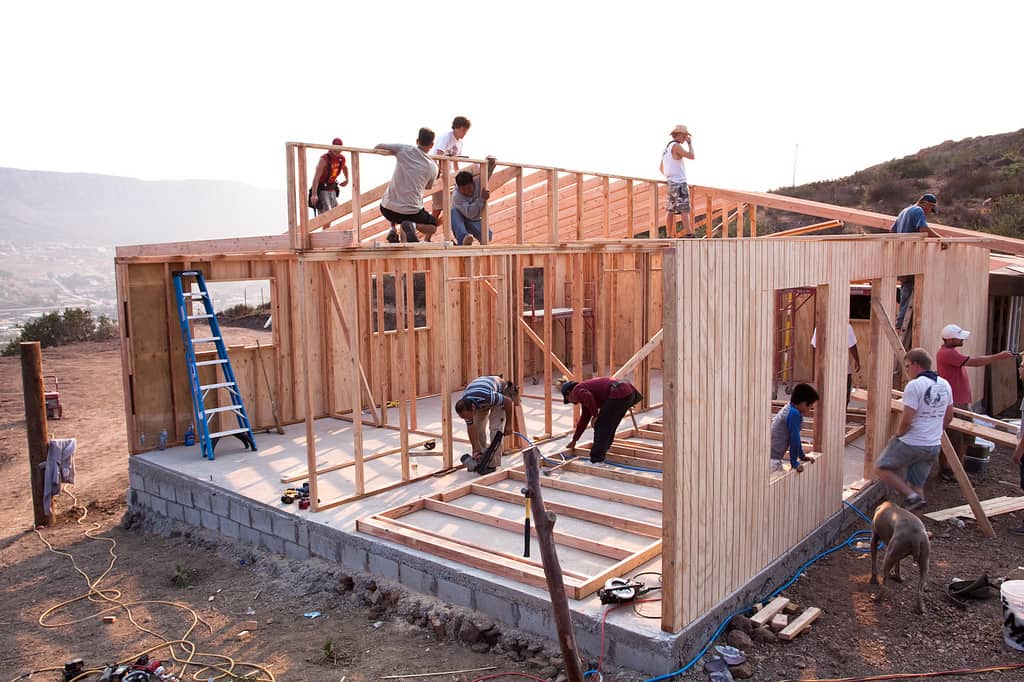What Are the Basic Things to Build a House?
Building a house is an exciting endeavor that requires careful planning, attention to detail, and a solid understanding of the basic elements involved. Whether you’re a first-time homeowner or an experienced builder, knowing the key components necessary to construct a house is essential. In this article, we will explore the fundamental elements required to build a house from the ground up.
1. Foundation
The foundation is the first and most crucial component of any house. It provides stability and support for the entire structure. There are various types of foundations, including concrete slab, crawl space, and basement. The choice of foundation depends on factors such as soil conditions, local building codes, and personal preference.
A concrete slab foundation is a common choice due to its simplicity and cost-effectiveness. It involves pouring a thick layer of concrete directly onto the ground, which acts as both the foundation and the floor of the house. On the other hand, a crawl space foundation is elevated off the ground, providing access to utilities and extra storage space. A basement foundation involves excavating a portion of the ground to create a livable space below the house.
2. Framing
Once the foundation is in place, the next step is framing. Framing refers to the construction of the skeletal structure of the house, which includes the walls, floors, and roof. This is typically done using wood or steel framing materials.
Walls are built by erecting vertical studs and attaching horizontal beams, forming a framework for rooms and supporting the weight of the structure. Floors and ceilings are constructed using joists, which provide structural support and create a level surface for walking. The roof framing consists of rafters or trusses, which give the roof its shape and support the weight of the roofing materials.
3. Roofing
The roof is a vital component of a house as it protects the structure and its occupants from the elements. There are various types of roofing materials to choose from, including asphalt shingles, metal, tile, and slate. The choice depends on factors such as climate, budget, and desired aesthetic.
Roofing materials are installed over the roof framing and provide a barrier against rain, snow, and sunlight. Proper installation is crucial to ensure a watertight and durable roof. It’s recommended to hire a professional roofer to handle this task, as it requires specialized skills and equipment.

4. Plumbing and Electrical Systems
The plumbing and electrical systems are essential for the functioning of a modern house. Plumbing includes water supply lines, drainage pipes, and fixtures such as sinks, toilets, and showers. Electrical systems consist of wiring, outlets, switches, and a circuit breaker panel.
Plumbing and electrical work should be done by licensed professionals to ensure compliance with building codes and safety standards. The layout and design of these systems should be carefully planned to meet the specific needs of the house and its occupants.
5. Insulation and HVAC
Insulation plays a vital role in maintaining comfortable indoor temperatures and energy efficiency. It helps to keep the house warm in winter and cool in summer by minimizing heat transfer through walls, floors, and ceilings. Common insulation materials include fiberglass, cellulose, and spray foam.
Heating, ventilation, and air conditioning (HVAC) systems are responsible for regulating the temperature, humidity, and air quality within the house. This includes furnaces, air conditioners, ductwork, and ventilation fans. Proper insulation and a well-designed HVAC system work together to create a comfortable living environment while minimizing energy consumption and utility costs.
6. Windows and Doors
Windows and doors not only provide access and natural light but also contribute to the aesthetic appeal of a house. They should be properly installed and sealed to prevent air and water leakage. Additionally, windows should be equipped with appropriate glazing to enhance energy efficiency and minimize heat loss or gain.
7. Interior Finishes
Interior finishes give a house its unique character and make it feel like a home. This includes flooring, wall finishes, and paint or wallpaper. The choice of materials and colors depends on personal preference and style. Popular flooring options include hardwood, tile, laminate, and carpet. Wall finishes can range from paint to wallpaper, and various textures and patterns can be used to create a desired look.
8. Exterior Finishes
The exterior finishes of a house not only provide protection from the elements but also contribute to its curb appeal. This includes siding, brickwork, stucco, or any other cladding material. The choice of exterior finishes should take into account factors such as climate, maintenance requirements, and architectural style.
9. Fixtures and Appliances
To make a house functional and comfortable, it’s important to install fixtures and appliances. This includes kitchen and bathroom fixtures such as sinks, faucets, toilets, showers, and bathtubs. In addition, appliances like stoves, refrigerators, dishwashers, and laundry machines are necessary for day-to-day living. It’s crucial to consider energy-efficient options to minimize utility costs and environmental impact.
10. Landscaping
While not a structural component, landscaping plays an important role in the overall appearance of a house. It involves the design and installation of outdoor features such as gardens, trees, shrubs, pathways, and hardscapes. Landscaping not only enhances the visual appeal of the property but also provides opportunities for outdoor recreation and relaxation. For Nazbuild building essentials see here.

In conclusion, building a house requires careful consideration of various basic elements. From the foundation to the landscaping, each component plays a crucial role in creating a safe, comfortable, and aesthetically pleasing home. Working with professionals and adhering to local building codes is essential to ensure a successful and satisfying construction process. Whether you’re embarking on a DIY project or hiring a contractor, understanding these fundamental elements will help you navigate the journey of building your dream house.

